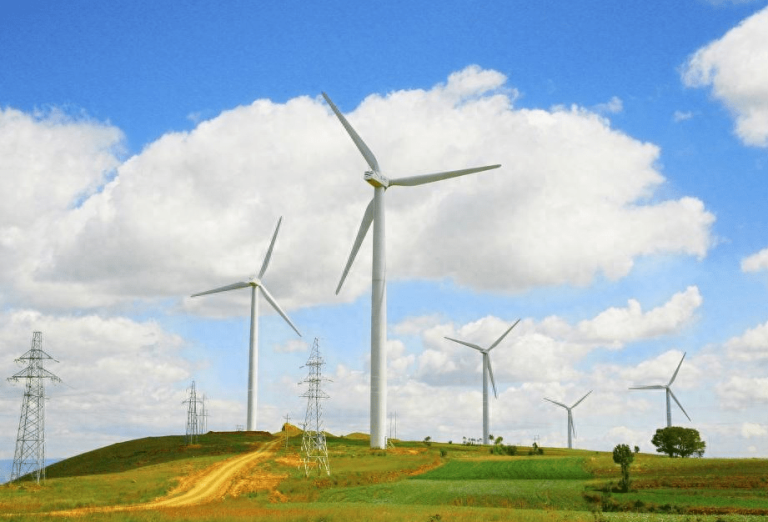Wind power and energy transition: Driving the world towards a sustainable future
Introduction: With the increasing severity of global climate change, energy transformation has become an important issue of common concern to governments and enterprises. As a clean and renewable energy source, wind power undoubtedly plays a key role in promoting the world to move towards a sustainable future. This article will explore the important position of wind power in the global energy transformation and analyze how it can help achieve energy independence, reduce carbon emissions, and accelerate the global transition to a low-carbon economy.
Part I: Background and necessity of energy transformation
Challenges of global climate change: Greenhouse gas emissions lead to climate change, extreme weather events occur frequently, and global warming has become a global problem that cannot be ignored.
Limitations of fossil energy: Traditional fossil energy such as coal, oil, and natural gas are the main sources of greenhouse gases and are non-renewable. Countries that rely on these energy sources face the dual pressures of energy security and resource depletion.
The rise of renewable energy: Renewable energy such as solar energy, wind energy, and hydropower have become an important alternative to traditional energy, promoting the optimization of the global energy structure and promoting energy transformation.
Part II: The key role of wind power in energy transformation
Emission reduction and environmental protection: Wind power generation does not rely on fossil fuels, does not produce greenhouse gases such as carbon dioxide during operation, has a significant emission reduction effect, and helps achieve the global emission reduction goals proposed by the Paris Climate Agreement.
Promote energy independence: Wind power generation can generate electricity locally and reduce dependence on external energy, which is especially important for countries with high dependence on energy imports.
Enhance energy diversity: Wind power is combined with other renewable energy sources such as solar energy and geothermal energy to form a stable and reliable energy supply system to ensure energy security.
Promote economic growth: Wind power generation can not only provide clean energy, but also create a large number of jobs. The global wind power industry chain covers multiple fields such as design, manufacturing, installation and maintenance, which has promoted the rise of green industries and the growth of local economies.
Part III: Challenges and solutions of wind power generation
Intermittency and instability: Wind power generation is affected by multiple factors such as climate and geography, and has intermittent and volatile problems. In order to meet this challenge, it is crucial to develop advanced energy storage technology, smart grids and wind power forecasting technology.
Site selection and environmental impact of wind farms: The construction of wind farms may have an impact on land, ecology, birds, etc. Therefore, a comprehensive assessment of the environment is required when selecting a site, and advanced environmental protection technologies such as bird monitoring systems and low-noise wind turbines are used.
High initial investment and cost control: Although the long-term operating cost of wind power is low, the initial investment is high. With technological progress, the manufacturing cost of wind power equipment has decreased year by year, and the scale development has effectively controlled the overall cost.
Part IV: Future development trend of wind power generation
Potential of offshore wind power: With technological progress, offshore wind power has gradually become an important direction of wind power generation. Offshore wind farms can avoid space limitations on land, have more stable wind resources, and have huge development potential.
Combination of wind power and energy storage: With the development of energy storage technology, the combination of wind power and energy storage systems will effectively solve the intermittent problem of wind power and provide a more stable power supply.
Integration of wind power and artificial intelligence: The application of artificial intelligence in the intelligent management, prediction, maintenance and other aspects of wind power makes the operation of wind farms more efficient and precise. For example, AI can optimize wind turbine scheduling, improve power generation efficiency, and reduce maintenance costs.
Part V: Prospects and Opportunities of the Global Wind Power Market
Growth Trends in the Global Wind Power Market: Global wind power installed capacity continues to grow, especially in China, the United States, Europe and other countries and regions, where the wind power industry is booming. It is expected that the global wind power market will continue to expand in the next decade and become an important part of the global energy market.
Investment and Policy Support: Policy support from governments is a key factor in the development of wind power. Many countries provide tax incentives, subsidy policies and renewable energy targets for the wind power industry, which provides investors with sufficient confidence.
Technological innovation in the wind power market: With the advancement of technology, the cost of wind power generation continues to decrease, and the application of new materials, equipment and management technologies makes wind power more competitive.
Conclusion: Wind power generation is playing an increasingly important role in the global energy transformation. From reducing carbon emissions to promoting energy independence, wind power not only provides a viable solution for the transformation of the global energy structure, but also brings new hope for countries to cope with climate change. With technological progress and policy support, wind power generation will continue to be the core force for global sustainable energy development. Through continuous innovation and optimization, wind power will have a profound positive impact on the global economy, environment and society in the coming decades.



